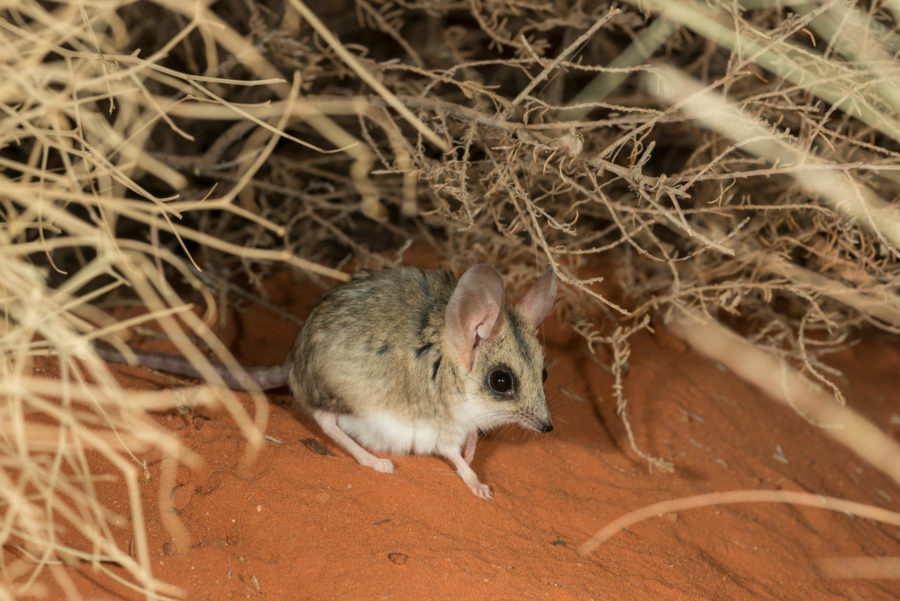The kultarr has more than a little spring in its step

Bec Crew
Bec Crew

Built with strong back legs, huge ears and a feather-duster tail, this rare and elusive species is our version of the jerboa, a bizarre hopping mouse from the deserts of Northern Africa and Asia.
In fact, the kultarr (Antechinomys laniger) is so similar to the jerboa (which looks like this), you might hear it be referred to as the marsupial jerboa. They both have an amazing ability to hop and bound over vast distances – perfect for when you’re living in expansive desert environments.
Here’s a kultarr showing off its amazing hop:
Don’t let the sweet face of the kultarr fool you – thanks to special adaptations, it’s as tough as they come, able to withstand the extreme temperatures and fluctuating food supply of the central Australian desert.
The species belongs to the family Dasyuridae, a group of marsupials native to Australia and New Guinea, which also includes quolls, the Tasmanian devil, the ningaui, mulgara and dunnarts. But kultarrs are so unusual, scientists had to create the genus Antechinomys just for them (though they were originally thought to be a type of phascogale, another type of small and bitey Australian marsupial).
Kultarrs have a wide range across central and southern Australia, with some of the most stable populations recorded in the Northern Territory and Western Australia. In Queensland and New South Wales, populations are more threatened, and in some places, the species has been driven to extinction due to habitat loss and predication by feral animals such as foxes and cats.
In 2015, National Parks and Wildlife Service staff were shocked to discover kultarrs in the Nombinnie Nature Reserve in central-western NSW – the first sighting in the area in 20 years.
Here’s one found in the Goldfields-Esperance region of Western Australia:
It’s no wonder that kultarrs are difficult to spot in the wild. As nocturnal animals, they hide in cracks in the soil or in underground burrows abandoned by trapdoor spiders, goanna and other species of hopping mice during the day. By night, they hunt all manner of insects and invertebrates, such as cockroaches, spiders and crickets.
They can also spend a lot of time in a sleep-like state called torpor, which is similar to hibernation. By curling up and allowing their body temperature and metabolism to drop right down, they can drastically reduce their energy expenditure when food and water are in short supply.
Kultarrs can live for a relatively long time for a tiny mammal, and scientists think it’s because of their ability to quickly enter a state of torpor. The oldest known kultarr reportedly survived for 67 months in the wild, while the oldest in captivity lived for 48 months. They can even go into a state of torpor with a pouch full of little ones, as this common dunnart demonstrates.
Learn more about Australia’s adorable desert-dwellers.

